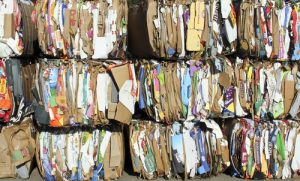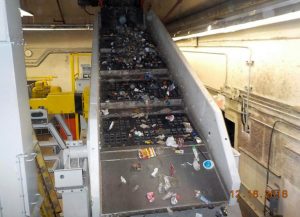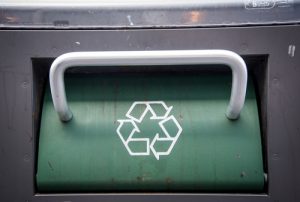 Seattle collectors will no longer be allowed to flip the lid on residential garbage cans to look for banned compostables.
Seattle collectors will no longer be allowed to flip the lid on residential garbage cans to look for banned compostables.

 Seattle collectors will no longer be allowed to flip the lid on residential garbage cans to look for banned compostables.
Seattle collectors will no longer be allowed to flip the lid on residential garbage cans to look for banned compostables.
 Education has won out over punishment in Little Rock, Ark., with hauler Waste Management announcing it will no longer track the households that are placing unacceptable materials into curbside recycling carts.
Education has won out over punishment in Little Rock, Ark., with hauler Waste Management announcing it will no longer track the households that are placing unacceptable materials into curbside recycling carts.
 A significant retrofit at the GreenWaste materials recovery facility will feature heavy use of artificial intelligence sorting equipment and other technology.
A significant retrofit at the GreenWaste materials recovery facility will feature heavy use of artificial intelligence sorting equipment and other technology.
 Thousands of tons of materials were seized during a raid in the Chinese province of Guangdong last week. It’s the latest enforcement action taken as part of China’s ongoing campaign to combat low-quality recovered-material imports.
Thousands of tons of materials were seized during a raid in the Chinese province of Guangdong last week. It’s the latest enforcement action taken as part of China’s ongoing campaign to combat low-quality recovered-material imports.

Brent Bell, vice president of recycling operations.
The recycling chief at Waste Management recently reflected on the company’s ongoing efforts to clean up the material stream. The takeaway: It’s a long slog.
 Why are paper recycling prices at near-record levels? The answer boils down to uncertainties in the Chinese market and strong demand at home.
Why are paper recycling prices at near-record levels? The answer boils down to uncertainties in the Chinese market and strong demand at home.
 A materials recovery facility spent $671,000 to buy and install glass cleanup equipment, which is generating $296,000 in annual savings. The project in Guelph, Ontario shows how investing in glass recovery technologies can pencil out favorably for MRFs.
A materials recovery facility spent $671,000 to buy and install glass cleanup equipment, which is generating $296,000 in annual savings. The project in Guelph, Ontario shows how investing in glass recovery technologies can pencil out favorably for MRFs.
 The national average price of post-consumer PET beverage bottles has been rising steadily since January. On Jan. 3, the national average price was 10.8 cents per pound and has moved up 39.8 percent to the current 15.1 cents per pound.
The national average price of post-consumer PET beverage bottles has been rising steadily since January. On Jan. 3, the national average price was 10.8 cents per pound and has moved up 39.8 percent to the current 15.1 cents per pound.
 Pennsylvania’s recycling industry contributed $22.6 billion in value to the state’s gross product in 2015, according to an economic impact report. The industry also contributed $1.7 billion in state taxes and $2.7 billion in federal taxes that year.
Pennsylvania’s recycling industry contributed $22.6 billion in value to the state’s gross product in 2015, according to an economic impact report. The industry also contributed $1.7 billion in state taxes and $2.7 billion in federal taxes that year.
 Ontario lawmakers last week passed a bill mandating producers to pay the full costs of recycling printed paper and packaging. However, many specifics of the recovery system, which will target a wide range of plastic products, have yet to be determined.
Ontario lawmakers last week passed a bill mandating producers to pay the full costs of recycling printed paper and packaging. However, many specifics of the recovery system, which will target a wide range of plastic products, have yet to be determined.
